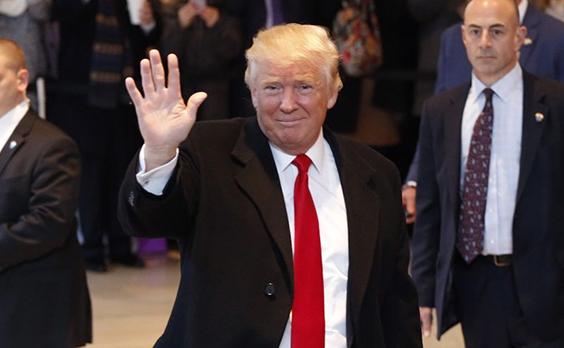The Electoral College members fighting to stop Donald Trump becoming president
Group say they were inspired by Founding Father's proclamation that Electoral College is designed to stop unfit people becoming President

Your support helps us to tell the story
From reproductive rights to climate change to Big Tech, The Independent is on the ground when the story is developing. Whether it's investigating the financials of Elon Musk's pro-Trump PAC or producing our latest documentary, 'The A Word', which shines a light on the American women fighting for reproductive rights, we know how important it is to parse out the facts from the messaging.
At such a critical moment in US history, we need reporters on the ground. Your donation allows us to keep sending journalists to speak to both sides of the story.
The Independent is trusted by Americans across the entire political spectrum. And unlike many other quality news outlets, we choose not to lock Americans out of our reporting and analysis with paywalls. We believe quality journalism should be available to everyone, paid for by those who can afford it.
Your support makes all the difference.A group of US Electoral College voters is campaigning for their colleagues to stop Donald Trump becoming president, claiming that the Founding Fathers designed the system so a “demagogue” could not take office.
The Hamilton Electors, named after one of the drafters of the US Constitution and first Treasury Secretary Alexander Hamilton, say it is their duty to prevent the former reality star becoming president regardless of how their states voted on 8 November.
Citing Hamilton’s proclamation that “the office of President will never fall to the lot of any man who is not in an eminent degree endowed with the requisite qualifications”, Michael Baca of Colorado and Bret Chiafalo of Washington state are calling on their colleagues on both sides of the aisle to disregard their states’ voting rules.
Presidential elections are decided by the 538 electors in the Electoral College who are distributed according to population size. A candidate needs 270 votes to win.
Although Mr Trump has won 306 votes to Hillary Clinton’s 232, the Democrat won the popular vote by over two million.
Mr Baca, who is preparing to challenge a Colorado law which requires electors to vote with their state, told CBS Denver that the Electoral College was designed as a “break-the-glass-in-case-of-an-emergency mechanism.
“We have that, ‘Hey, Donald Trump came through, but now we need to break the glass and we need to really do our job under the 12th Amendment'”.
Even though both Mr Baca and Mr Chiafalo represent states which choose Ms Clinton, they believe electors do not necessarily have to choose Ms Clinton when voting and could opt for another Republican candidate – such as the Vice-President elect Mike Pence who was heckled at a recent performance of the Hamilton musical in New York over his support for Mr Trump.
Mr Baca said: “A Republican won the Electoral College votes, absolutely Donald Trump won that. I’ll give you that. But I don’t think that Republican needs to be Donald Trump”.
Electors who vote differently to their states are known as “faithless electors” and are usually obligated to pay a small fine.
There have been a few examples of faithless electors in US history but none have ever affected the result.
The group claimed it had found seven electors would were willing to change their vote to another Republican.
If they do follow through with the plan it will be the largest electoral defection since 1808 when six Democratic-Republican electors refused to vote for the 4th President James Madison.
It comes as Green candidate Jill Stein crowdfunded a legal challenge over claims that results in several key swing states could have been manipulated.

The $2.5m (£2m) campaign will challenge the results in Wisconsin, Michigan and Pennsylvania following allegations by computer scientists that the electronic voting results may have been manipulated in favour of Mr Trump.
Each state narrowly opted for Mr Trump but the scientists claim they had evidence to show Ms Clinton’s vote was seven per cent down on average in Wisconsin counties and speculated that she should have received an additional 30,000 votes. She lost the state by 27,000.
If all three were given to Ms Clinton it would tip the scales in her favour, giving her 278 Electoral College votes to Mr Trump’s 260.
Join our commenting forum
Join thought-provoking conversations, follow other Independent readers and see their replies
Comments